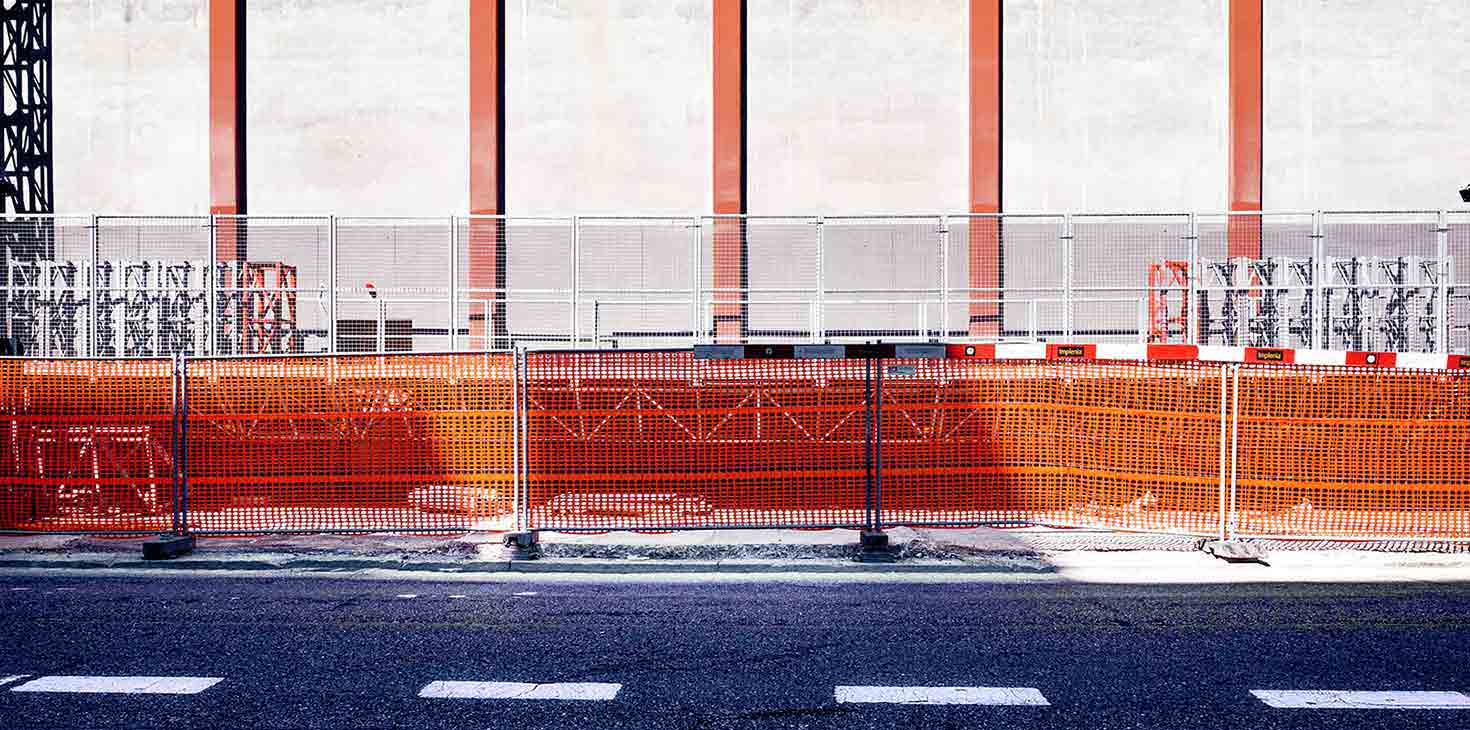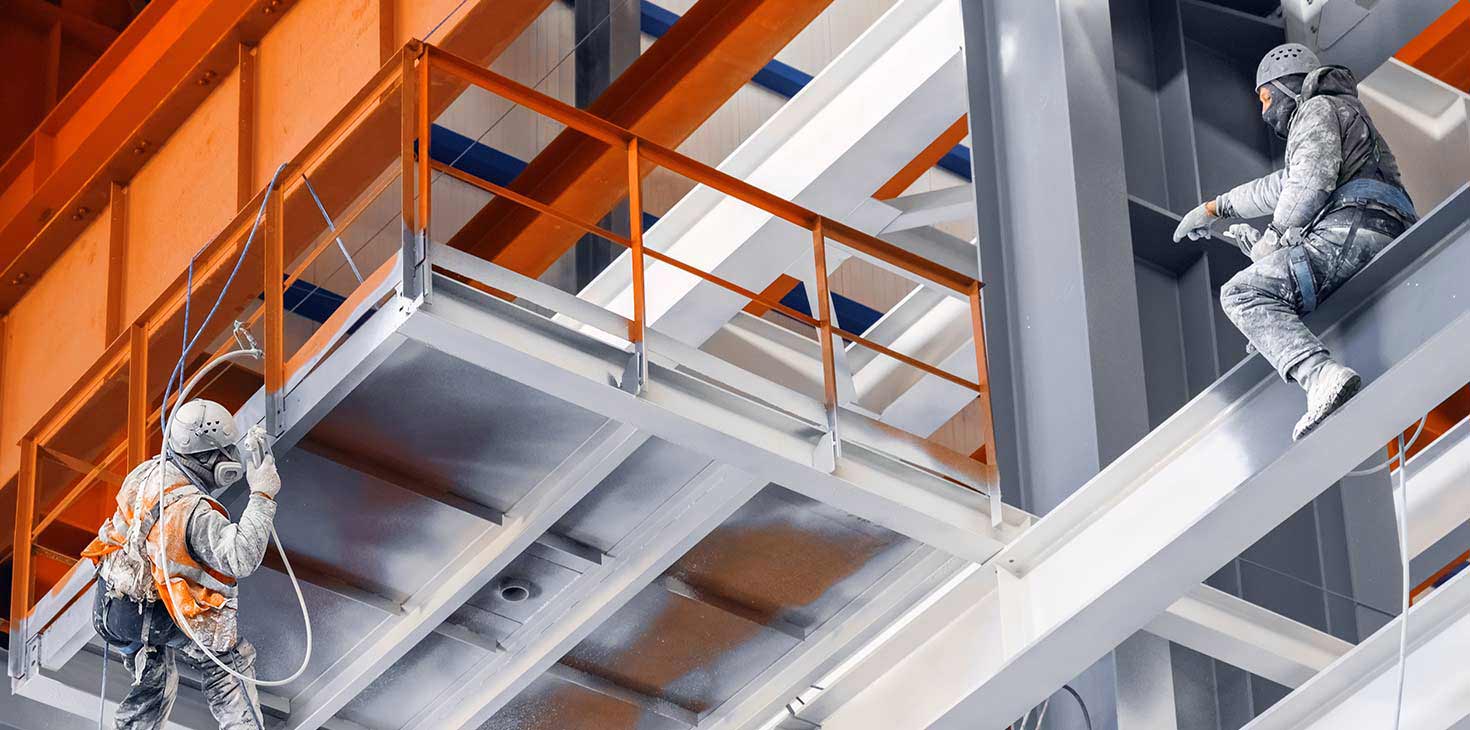


Application
Road Construction Over Poor Soils
The growing need for new roads may, in many cases, require construction over soft or loose soils that are incapable of supporting additional loads. EPS Geofoam can be used to replace compressible soils or in place of heavy fill materials to prevent unacceptable loading on underlying soils and adjacent structures. The high compressive resistance of EPS Geofoam makes it able to adequately support traffic loadings associated with secondary and interstate highways. Construction with WPS Geofoam also saves time because EPS Geofoam is easy to handle without the need for special equipment.
EPS Geofoam Type Used
For ordinary road construction, it usually requires from EPS 19 to EPS 29 or depending on the designers calculation.
Methodology/Constructions
The typical road construction, from bottom to top, is as follows: excavation of existing earth surface. Without compaction, place geotextile for separation of layer. Then place a layer of sand at the base of the roadway to provide a level and free draining construction surface. Place EPS Geofoam Blocks to the desire height, staggering the vertical joint in each course so as not to create continous vertical seams. A load distribution slab is placed over the top layer of the EPS Geofoam to distribute the load to the Geofoam, enhance overall performance and protect the EPS Geofoam from hydrocarbon attack and from heavy traffic loads. Other structural features (i.e., tilt-up panel walls, impact barriers, light and power poles, etc.) can be anchored to the laod distribution slab. Then covered with standard base and sub-base course based on the requirement. The final pavement construction may be placed at the earliest possible time.
Road Widening
Roadways often have to be widened to reduce congestion. This situation results in additional fill being required for the roadway to be widened. This can be an expensive and time-consuming process if the soils adjacent to the existing roadway are not adequate to support the traffic loads because the resulting settlement can impact the existing roadway. In traditional construction, soil embankments are built in thin lifts, each of which must be compacted before the next lift is placed. Using EPS Geofoam eliminates the need for compaction and fill testing, reduces the construction time and minimizes impact to the existing roadway and adjacent structures and/or buried utilities. The high compressive resistance of EPS Geofoam makes it able to withstand the induced traffic forces without causing unacceptable loading of the underlying soils or adjacent fill. In addition, it may be possible to build steeper slopes using EPS Geofoam than soil, which can reduce the amount of additional right-of-way that needs to be acquired.
EPS Geofoam Type Used
For ordinary road construction, it usually requires from EPS 19 to EPS 29 or depending on the Designers calculation.
Methodology/ Constructions
The typical road construction, from bottom to top, is as follows: excavation of existing earth surface. Without compaction, place geotextile for separation of layer. Then place a layer of sand at the base of the roadway to provide a level and free draining construction surface. Place EPS Geofoam Blocks to the desire height, staggering the vertical joint in each course so as not to create continuous vertical seams. A load distribution slab is placed over the top layer of EPS Geofoam to distribute the load to the Geofoam, enhance overall performance and protect the EPS Geofoam from hydrocarbon attack and from heavy traffic loads. Other structural features (i.e., tilt-up panel walls, impact barriers, light and power poles, etc.) can be anchored to the load distribution slab. Then covered with standard base and sub-base course based on the requirement. The final pavement construction may be placed at the earliest possible time.
Bridge Abutment
There are several advantages to using EPS Geofoam to construct approach fills for bridge abutments. Because of its high compressive resistance, EPS Geofoam can safely support highway loading without over-stressing the underlying soils. This usually results in less differential movement at the bridge/approach fill interface, which reduces the construction cost of the approach slab and its long-term maintenance. In addition, when compared to traditional embankment fills, EPS Geofoam imparts significantly reduced lateral forces on abutment walls, foundations and other retaining structures, because the transmitted lateral force is proportional to the weight of the backfill. If this weight is substantially reduced, as with the case of EPS Geofoam backfill, this leads to savings in the design of bridge abutment and other walls, which are no longer required to resist large horizontal static and dynamic forces.
Methodology/ Constructions
The EPS Geofoam blocks were faced with precast concrete panel walls. A 6-inch (150 mm)-thick, reinforced concrete slab was placed on top of the EPS Geofoam to distribute the traffic loads, protect against possible fuel spillage and provide lateral support to the exterior concrete panels. Lastly, the overlying roadway subgrade and pavement were constructed atop the load distribution slab.
Bridge Under Fill
EPS Geofoam can be used to support bridges when properly designed. EPS Geofoam adds little additional load to the underlying ground. In cases where the existing bridge is no longer structurally capable of carrying the required traffic loads, EPS Geofoam infill can help support the span and transfer the traffic load safely to the foundation or underlying soil.
Culverts, Pipelines and Buried Structures
Engineering plans often call for the placement of new fill over existing underground structures that were not designed to support the increased loads. Rather than removing or strengthening the existing underground structures, the new fill load can be reduced to a tolerable level by using EPS Geofoam instead of heavier traditional fills.
Compensating Foundations
EPS Geofoam can be used as a compensating foundation to reduce the load on underlying compressible soils and minimize building settlement along with potential bearing capacity problems. Existing soil is excavated to reduce the net applied load to the soil by the new structure. If the amount of soil excavated equals the full weight or stress applied by the new structure, the foundation is called “floating” or “fully compensating.”
Rail Embankment
EPS Geofoam can be used as embankment on Railway System. This helps on the project time and cost constraints.
Landscaping and Vegetative Green Roofs
EPS Geofoam can be used to create topography without adding significant load to underlying structures and services. Some examples of this application include creating roof gardens for urban buildings.
Retaining and Buried Wall Backfill
EPS Geofoam can be used as backfill behind retaining and buried structures to greatly reduce lateral pressures on the structure. Because the horizontal pressure acting on a retaining wall is proportional to the weight of the backfill, a less robust retaining structure is needed if the backfill soil in the active zone behind the retaining wall is replaced with EPS Geofoam.
Likewise, the use of EPS Geofoam backfill behind retaining and buried structures also limits the horizontal forces that can develop during earthquakes. In retaining wall applications, adequate drains should be provided to prevent the development of hydrostatic pressure and uplift due to buoyancy for sites with shallow groundwater and loose soils.
Slope Stabilization
Unstable slopes can be remediated by removing a portion of the existing soil and replacing it with lightweight EPS Geofoam, thus unloading the head or top of the landslide and improving its stability. With this method, the entire slide mass may not need to be excavated and replaced to achieve the desired factor of safety against future sliding, which can lead to significant time and cost savings. EPS Geofoam can be used for slope stabilization and repair in both soil and rock slopes.
Stadium and Theater Seating
EPS Geofoam can be used to form tiered seating in locations such as auditoriums, movie theaters, gymnasiums and churches. The high compressive resistance and light weight of EPS Geofoam make it well suited to both new construction and renovation projects.
Levees
Levees are frequently built on compressible alluvial soils along rivers because of river depositional patterns. These compressible and saturated soils settle over time due to primary and secondary compression. This continued settlement results in the levee having to be repeatedly raised to provide the desired flood protection. Levees are usually raised with conventional soil fill to return the levee to its original level. The extra weight from the levee raising causes additional settlement and the cycle of settlement and raising continues.
EPS Geofoam can be easily installed to provide the volume needed to return the levee to its original configuration. And with approximately 1% of the weight of traditional soil fills, the use of EPS as fill reduces/eliminates additional stress and the cycle of settlement and levee raising. Of course, sufficient protective soil cover must be placed above the EPS Geofoam. EPS Geofoam can be easily handled at sites that have difficult accessibility and, if needed. EPS Geofoam can be transported by barge.
To allow placement of the EPS Geofoam, a portion of the existing levee is removed and stockpiled for reuse as soil cover for the EPS Geofoam. A geotextile is used on the exposed subgrade to provide separation and improved stability.
EPS Geofoam blocks are placed on a sand-leveling bed and a geomembrane cover is used to encapsulate the blocks. A geotextile is placed over the geomembrane and the excavated soil is compacted over the EPS Geofoam to bring the levee to its design elevation. These same principles can be applied to the construction of a new levee.
Airport Runway/Taxiway
Similar to road construction, EPS Geofoam can be used under airport runways to replace unsuitable soils without overloading the underlying subgrade materials.
Special Applications
This section describes some of the more unique applications of EPS Geofoam in construction activities in North America. Some of these special applications include noise or visual barriers, expansive soils, earthquake mitigation, permafrost and rock fall protection.
Noise and Vibration Damping
EPS Geofoam can be used to build free- standing walls or embankments to reduce noise from highways. They can also be used to reduce the transmission of ground borne ibrations, for example, under railways or pavements, as part of the foundation of adjacent structures or as a cutoff wall between the railways or pavements and the adjacent structures.
Compressible Application
EPS Geofoam is available in a wide range of compressive resistances. Compressible applications utilize the compressibility of EPS Geofoam to accommodate ground movements. In contrast to most applications where EPS Geofoam is designed for loading below the compressive resistance at 1% of the EPS Geofoam, compressible applications are designed for strains beyond 1%.
When properly designed, EPS Geofoam, when in contact with expansive soils, deforms and reduces the stresses transmitted to the relatively stiff This section describes some of the more unique applications of EPS Geofoam in construction activities in North America. Some of these special applications include noise or visual barriers, expansive soils, earthquake mitigation, permafrost and rock fall protection. structures by allowing the soils to expand, compress the EPS Geofoam and not impact the structure. This means that the retaining structure or floor slab, built adjacent to or on expansive soil, only has to be designed for a small percentage of the forces that would be expected due to swelling or heaving of the expansive soil.
Seismic Application
EPS has two primary advantages that make it attractive for seismic design: its light weight and its compressibility. The low weight of EPS Geofoam provides a significant reduction in the seismic forces imposed on buried structures, retaining walls, pipelines, etc., because the magnitude of the seismic force is proportional to the mass of the system, i.e., force equals mass times acceleration.









